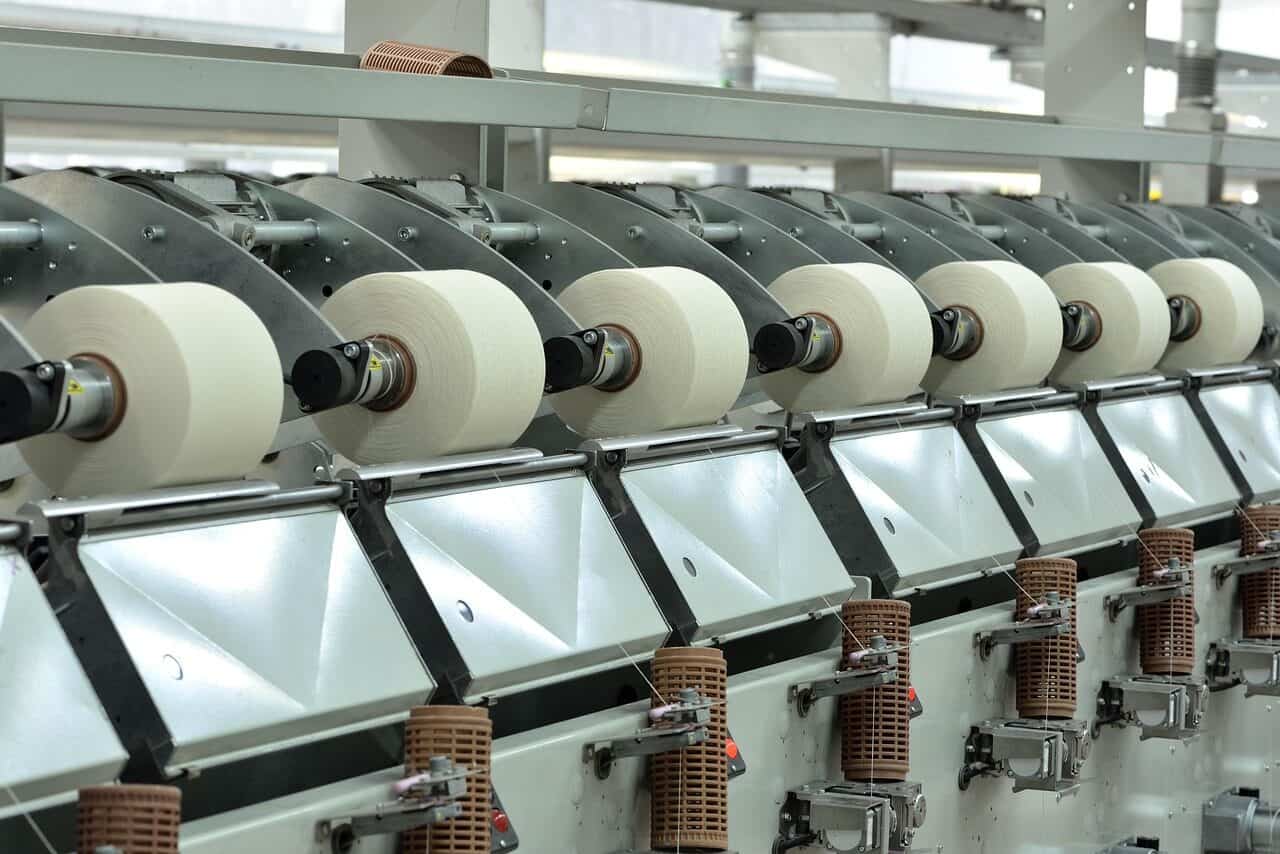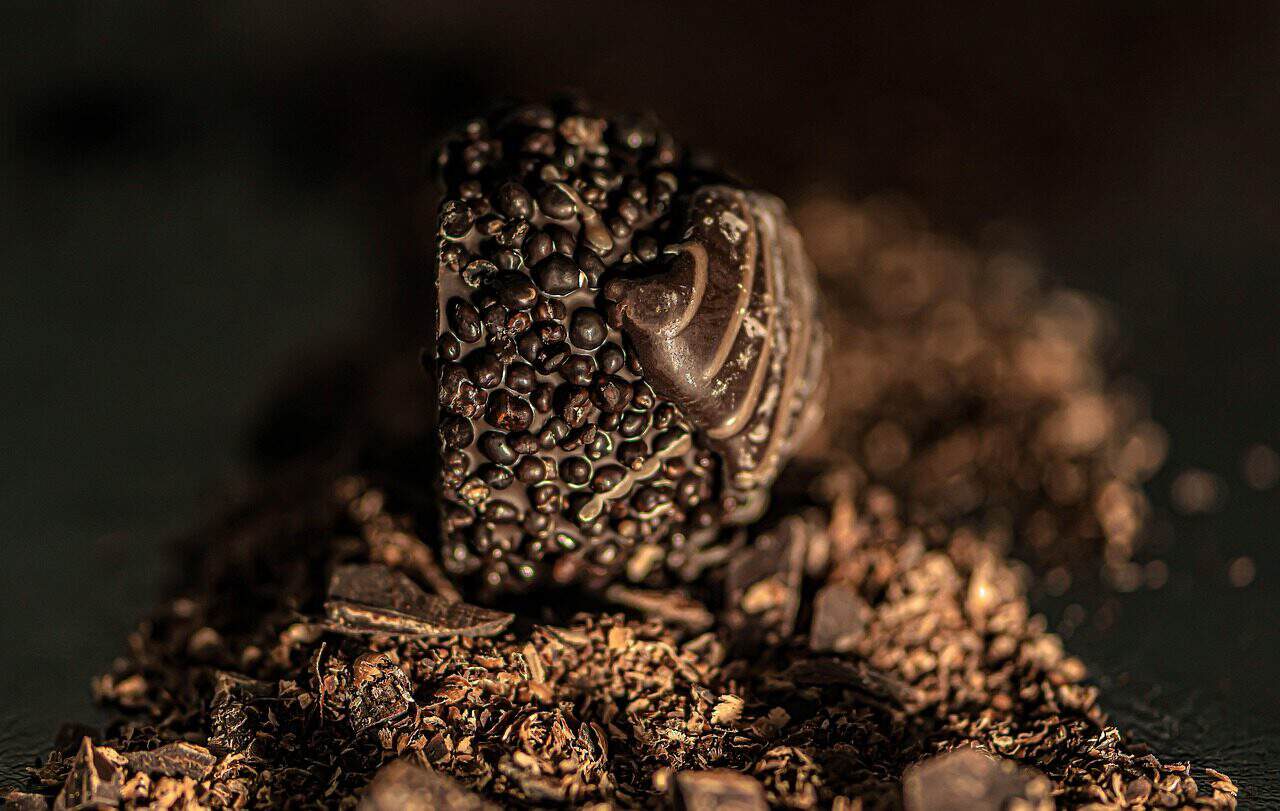Pembuatan Cokelat Khusus: Panduan Sederhana untuk Merek Anda
Pernahkah Anda membayangkan logo merek Anda tercetak di atas cokelat batangan berkualitas tinggi, atau menciptakan rasa khusus yang hanya Anda jual? Bagi banyak pemilik bisnis, hal ini tampak rumit dan mustahil untuk dicapai. Namun, bagaimana jika ada cara untuk bekerja sama dengan para ahli yang dapat mewujudkan impian Anda? Ini disebut produksi cokelat OEM - upaya tim yang membantu Anda menciptakan produk permen unik Anda sendiri.
Artikel ini akan mengajarkan Anda segala hal tentang pembuatan cokelat OEM. Kami akan menjelaskan prosesnya secara sederhana dan berbagi tips dari produsen berpengalaman untuk membantu Anda mulai dari ide pertama hingga produk jadi yang siap dijual. Anda akan belajar bagaimana membuat pilihan cerdas dan membangun bisnis cokelat yang sukses dari awal.
Dalam panduan ini, kami akan menjelaskannya:
- Dasar-dasar cokelat OEM dan bagaimana cokelat ini dapat membuat merek Anda menjadi lebih baik
- Penjelasan langkah demi langkah tentang bagaimana cokelat dibuat
- Hal-hal penting yang harus diperhatikan saat memilih mitra manufaktur
- Cara menyenangkan untuk menyesuaikan produk Anda, berbagai kegunaan, dan apa yang akan datang selanjutnya
Memahami Perbedaan Jenis Kemitraan
Untuk membuat pilihan terbaik bagi merek Anda, Anda perlu memahami berbagai cara yang dapat Anda gunakan untuk bekerja sama dengan produsen. Istilah OEM, Private Label, dan ODM mungkin terdengar membingungkan, tetapi istilah-istilah tersebut mewakili pendekatan bisnis yang berbeda. Masing-masing memengaruhi produk Anda, berapa banyak uang yang perlu Anda investasikan, dan berapa nilai merek Anda. Mempelajari opsi-opsi ini adalah langkah pertama untuk meluncurkan produk yang sukses.
Apa Arti Setiap Istilah
OEM (Original Equipment Manufacturer) berarti bekerja sama secara erat. Dalam pendekatan ini, produsen membuat produk berdasarkan desain dan ide unik Anda. Anda membawa visi, konsep resep, dan identitas merek Anda. Produsen menyediakan peralatan, keterampilan, dan pemeriksaan kualitas untuk mewujudkan visi Anda. Yang paling penting, Anda biasanya memiliki hak atas desain produk akhir Anda.
Private Label (juga disebut White Label) adalah jalur yang lebih sederhana. Ini berarti mencantumkan nama merek dan logo Anda pada produk yang sudah dibuat oleh produsen. Resep, bentuk, dan ukurannya sudah dibuat dan diuji. Ini cocok untuk merek yang ingin masuk ke pasar dengan cepat dan tidak ingin menghabiskan banyak uang di muka, karena penelitian dan pengembangan sudah dilakukan.
ODM (Original Design Manufacturer) adalah perpaduan dari kedua pendekatan tersebut. Dalam kemitraan ODM, produsen menawarkan produk yang sudah mereka rancang, tetapi Anda dapat mengubah beberapa bagiannya. Misalnya, Anda dapat memulai dengan resep cokelat batangan 70% mereka yang sudah ada, tetapi meminta mereka menambahkan ceri kering atau garam Himalaya merah muda. Ini memberi Anda lebih banyak pilihan daripada label pribadi tetapi lebih sedikit kontrol daripada proyek OEM penuh.
Perbandingan Cepat: OEM vs. Label Pribadi vs. ODM
Tabel ini menunjukkan perbedaan antara tiga pendekatan utama, membantu Anda mengetahui mana yang paling sesuai dengan tujuan, anggaran, dan jadwal merek Anda.
| Aspek | OEM (Produsen Peralatan Asli) | Label Pribadi (Label Putih) | ODM (Produsen Desain Asli) |
| Desain Produk | Berdasarkan spesifikasi unik klien. | Formula produk yang sudah ada dari produsen. | Desain dasar dari produsen, dengan modifikasi dari klien. |
| Kekayaan Intelektual | Biasanya dimiliki oleh klien. | Dimiliki oleh produsen. | Sering kali dibagikan atau dilisensikan dari produsen. |
| Waktu ke Pasar | Lebih lama (karena R&D dan pengujian). | Terpendek. | Sedang. |
| Tingkat Kustomisasi | Tinggi (resep, cetakan, kemasan, dll.). | Rendah (terutama branding dan pengemasan). | Sedang (beberapa modifikasi pada desain yang sudah ada). |
| Investasi Awal | Tertinggi (R&D, biaya pembuatan cetakan). | Terendah. | Sedang. |
Mengapa Memilih OEM
Memilih jalur OEM untuk merek cokelat Anda adalah keputusan penting yang menawarkan manfaat jangka panjang yang besar. Ini bukan hanya tentang meletakkan produk di rak-rak toko - ini tentang menciptakan sesuatu yang berharga yang terhubung langsung dengan identitas merek Anda. Berikut adalah keuntungan utama yang membuat OEM menjadi pilihan cerdas untuk merek yang ambisius.
- Keunikan Merek yang Lengkap dan Menonjol
Produk Anda akan menjadi produk yang benar-benar unik. Mulai dari persentase kakao tertentu dan dari mana biji kakao berasal hingga bahan-bahan khusus dan cetakan yang dibentuk khusus, cokelat Anda tidak akan mudah ditiru. Hal ini menciptakan keunggulan yang kuat di pasar yang ramai, memungkinkan merek Anda menonjol berdasarkan kualitas daripada hanya bersaing pada harga.
- Kendali Penuh Atas Kualitas dan Bahan
Dengan OEM, Anda memutuskan setiap bahan yang masuk ke dalam produk Anda. Kontrol ini sangat penting bagi merek yang menargetkan pelanggan yang pemilih atau kebutuhan diet tertentu. Apakah merek Anda berfokus pada produk organik, vegan, bean-to-bar, atau menampilkan kakao dari satu tempat tertentu, OEM memastikan produk akhir sesuai dengan janji Anda. Anda mengendalikan cerita tentang kualitas produk Anda dari awal hingga akhir.
- Perlindungan Ide Anda
Resep unik, rasa spesifik, dan desain cetakan khusus adalah milik Anda. Ini adalah manfaat utama dari pendekatan OEM. Pendekatan ini membangun nilai jangka panjang untuk merek Anda. Produk Anda yang sukses tidak dapat dijual oleh produsen ke merek lain, dan pesaing tidak dapat meluncurkan produk yang sama persis dengan nama yang berbeda. Inovasi Anda tetap menjadi milik Anda.
- Nilai Lebih Tinggi dan Keuntungan Lebih Baik
Produk yang dibuat khusus, berkualitas tinggi, dan unik, secara alami tampak lebih berharga bagi pelanggan. Hal ini memungkinkan Anda untuk mengenakan harga yang lebih tinggi dibandingkan dengan produk generik. Riset pasar terbaru menunjukkan bahwa pasar cokelat khusus terus berkembang, dengan pelanggan yang semakin bersedia membayar lebih untuk produk yang menawarkan rasa yang unik, sumber yang etis, dan bahan-bahan berkualitas tinggi. Tren ini secara langsung mendukung pemilihan OEM, yang mengarah pada margin keuntungan yang lebih baik.
- Mencocokkan Kisah Merek Anda
Produk cokelat OEM dapat dibuat dengan hati-hati untuk mewakili cerita, nilai, dan gaya merek Anda. Jika merek Anda adalah tentang bahan-bahan alami yang sederhana, Anda dapat membuat cokelat batangan dengan potongan-potongan besar dan kemasan kertas kerajinan. Jika merek Anda mewakili kemewahan modern, Anda dapat mendesain bar yang ramping dan sederhana dengan sentuhan akhir yang mengkilap. Konsistensi ini menciptakan pengalaman pelanggan yang kuat dan tulus di mana produk itu sendiri yang menceritakan kisah Anda.
Proses Produksi 7 Langkah
Memahami proses OEM penting untuk membangun kemitraan yang saling percaya. Kami melihat perjalanan dari ide sederhana hingga menjadi cokelat batangan yang sudah jadi sebagai proses 7 langkah yang terstruktur dan berbasis tim. Peta jalan ini, berdasarkan pengalaman profesional kami, memastikan kejelasan, mengelola ekspektasi, dan memberikan produk akhir yang luar biasa.
- Langkah 1: Pengembangan Konsep & Resep (R&D)
Ini adalah fondasi kreatif dari proyek Anda. Di sini, visi Anda akan bertemu dengan keterampilan teknis kami. Anda akan bekerja secara langsung dengan tim ahli makanan dan pembuat cokelat berpengalaman kami untuk menentukan setiap aspek dari produk Anda. Kami akan mendiskusikan dari mana kakao berasal dan persentasenya, rasa yang diinginkan (seperti buah, kacang-kacangan, earthy, atau pedas), bahan tambahan yang potensial (seperti kacang cincang, buah kering beku, atau rempah-rempah eksotis), dan kebutuhan diet khusus (seperti vegan, bebas gluten, atau ramah keto). Fase ini adalah tentang mengeksplorasi ide dan menentukan “apa”.”
Kiat Produsen: Datanglah ke pertemuan pertama dengan membawa riset pasar, analisis pesaing, dan ide rasa utama Anda. Akan tetapi, tetaplah terbuka terhadap saran-saran kami. Dengan pengetahuan kami yang mendalam tentang bagaimana bahan-bahan bekerja bersama dan teknik pengolahan, kami mungkin menyarankan bahan atau metode baru yang dapat membuat konsep Anda berubah dari baik menjadi benar-benar menakjubkan.
- Langkah 2: Menemukan dan Menyetujui Bahan
Setelah kami menentukan resep di atas kertas, tim pembelian kami mulai mencari bahan baku yang dibutuhkan. Ini adalah langkah penting di mana kualitas menjadi hal yang paling penting. Kami menggunakan jaringan pemasok tepercaya kami untuk menemukan segalanya, mulai dari biji kakao yang sempurna hingga vanili yang paling harum atau garam laut yang paling renyah. Kami akan memberi Anda sampel bahan-bahan utama, seperti berbagai jenis cokelat, untuk dievaluasi dan disetujui oleh Anda. Hal ini untuk memastikan Anda benar-benar puas dengan bahan dasar produk Anda sebelum kami melanjutkan.
Kiat dari Produsen: Selalu tanyakan Certificate of Analysis (COA) untuk bahan-bahan utama Anda, terutama cokelat itu sendiri. Dokumen ini memberikan bukti teknis tentang sifat-sifatnya. Selain itu, mintalah dokumentasi untuk setiap klaim sumber yang etis seperti Fair Trade atau Rainforest Alliance untuk memastikan bahwa mereka memenuhi standar merek Anda.
- Langkah 3: Pengujian & Peningkatan Batch Kecil
Di sinilah konsep Anda menjadi nyata. Tim peneliti kami membuat sejumlah kecil cokelat buatan tangan di laboratorium kami. Sampel uji ini dikirimkan kepada Anda untuk dicicipi dan dievaluasi secara menyeluruh. Tahapan ini merupakan lingkaran umpan balik yang penting. Anda mencicipi produk dan memberikan catatan rinci, dan kami memperbaiki resep berdasarkan masukan Anda. Biasanya tahap ini melibatkan beberapa kali proses karena kami menyempurnakan rasa manis, tekstur, dan keseimbangan rasa hingga sempurna.
Kiat Produsen: Saat Anda menguji sampel, cobalah untuk meniru pengalaman pelanggan. Jika cokelat tersebut dimaksudkan untuk dipanggang, pangganglah dengan cokelat tersebut. Jika cokelat itu untuk s'mores, lelehkan di atas api. Berikan umpan balik yang sespesifik mungkin. “Buatlah lebih gurih” tidak jelas, tetapi “tingkatkan kadar garam sebesar 5% dan tambahkan sedikit paprika asap” adalah umpan balik yang dapat ditindaklanjuti yang dapat kami lakukan.
- Langkah 4: Desain Cetakan & Pengujian Kemasan
Bersamaan dengan finalisasi resep, tim desain dan teknik kami mengerjakan bentuk fisik produk Anda. Jika Anda membutuhkan bentuk khusus atau cetakan logo, kami akan mendesain cetakan cokelat, memberikan gambar 3D dan akhirnya prototipe fisik untuk persetujuan Anda. Pada saat yang sama, kami membantu mengembangkan kemasannya, mulai dari foil bagian dalam atau pembungkus film hingga selongsong kertas luar, kotak, atau kantong. Kami fokus pada penampilan dan fungsionalitas.
Kiat Produsen: Perhatikan baik-baik “pengalaman membuka kemasan”. Kemasan adalah kontak fisik pertama yang dilakukan pelanggan dengan merek Anda. Kemasan harus melindungi produk, tetapi juga harus menceritakan sebuah kisah dan menciptakan momen yang menyenangkan. Pertimbangkan detail seperti dapat menyegel kembali batang yang lebih besar atau sentuhan akhir khusus seperti desain yang ditinggikan yang menambah kesan premium.
- Langkah 5: Uji Coba Produksi & Pemeriksaan Kualitas
Sebelum melakukan proses produksi skala penuh yang melibatkan ribuan unit, kami melakukan uji coba yang lebih kecil. Batch ini dibuat pada peralatan lini produksi yang sebenarnya, bukan di laboratorium penelitian. Tujuannya ada dua: pertama, untuk memastikan resep dan proses bekerja dengan sempurna saat beralih dari batch lab kecil ke volume yang lebih besar, dan kedua, untuk menyelesaikan pos pemeriksaan dan prosedur Jaminan Kualitas (QA) khusus untuk produk unik Anda.
Saran Produsen: Kami selalu menyarankan agar Anda meminta dan menyetujui sejumlah kecil sampel jadi dari uji coba ini. Ini adalah kesempatan terakhir Anda untuk melihat, merasakan, dan mencicipi produk persis seperti yang akan diproduksi dalam skala besar. Ini adalah kesempatan terakhir untuk menemukan masalah kecil sebelum investasi penuh dilakukan.
- Langkah 6: Produksi & Pengemasan Skala Penuh
Setelah semua resep, bahan, cetakan, dan kemasan disetujui secara resmi, kami menjadwalkan dan memulai produksi massal. Ini adalah proses yang sangat terkontrol. Proses ini melibatkan tempering cokelat yang tepat, penuangan ke dalam cetakan, melewati terowongan pendingin untuk memastikan hasil akhir yang sempurna, pengeluaran dari cetakan, dan terakhir, pembungkusan dan pengemasan barang jadi. Seluruh proses berlangsung di bawah standar kebersihan yang ketat dan pemantauan QA yang konstan.
Kiat Produsen: Diskusikan penjadwalan produksi dan waktu tunggu dengan kami sedini mungkin. Industri cokelat memiliki puncak musiman yang signifikan, terutama di sekitar kuartal 4 untuk liburan dan kuartal 1 menjelang Hari Valentine dan Paskah. Merencanakan produksi Anda jauh-jauh hari dapat memastikan waktu produksi dan menghindari potensi penundaan.
- Langkah 7: Pengiriman & Pengiriman
Langkah terakhir adalah mengirimkan produk kepada Anda dengan aman. Barang yang sudah jadi dan dikemas dikemas ke dalam kotak induk, ditumpuk dengan aman di atas palet, dan disiapkan untuk pengiriman. Kami bekerja sama dengan Anda untuk mengoordinasikan pengiriman ke gudang atau pusat distribusi yang Anda tentukan. Melindungi produk selama pengangkutan adalah tanggung jawab akhir kami.
Kiat Produsen: Cokelat sangat sensitif terhadap suhu dan kelembapan. Selalu bicarakan secara rinci tentang metode pengiriman, terutama jika produk Anda akan dikirim selama bulan-bulan yang hangat. Menggunakan pengiriman yang dikontrol suhu atau terisolasi sering kali diperlukan untuk menjamin produk tiba dalam kondisi yang sempurna dan siap dipajang di rak.
Memilih Produsen Anda
Memilih mitra untuk proyek cokelat OEM Anda bisa dibilang merupakan keputusan paling penting yang akan Anda ambil dalam keseluruhan proses. Produsen yang tepat bertindak sebagai perpanjangan tangan dari tim Anda, memberikan keahlian, memastikan kualitas, dan melindungi merek Anda. Namun, mitra yang salah dapat menyebabkan penundaan yang merugikan, kualitas yang tidak konsisten, dan potensi kerusakan pada reputasi merek Anda. Untuk menghindari risiko ini, kami sangat menyarankan proses penelitian yang terstruktur untuk mengevaluasi calon mitra.
Kartu Penilaian Evaluasi Produsen
Gunakan kartu penilaian ini sebagai kerangka kerja untuk mengajukan pertanyaan yang ditargetkan dan secara obyektif membandingkan produsen potensial. Mitra yang transparan dan cakap akan mampu menjawab pertanyaan-pertanyaan ini dengan percaya diri dan memberikan dokumentasi pendukung.
| Kriteria | Pertanyaan Kunci untuk Ditanyakan | Pentingnya |
| Sertifikasi & Kepatuhan | Apakah Anda bersertifikat GFSI (misalnya, BRC, SQF)? Apakah Anda menawarkan sertifikasi Organik, Kosher, Halal, atau Perdagangan yang Adil? | Tinggi |
| Keahlian & Spesialisasi | Jenis cokelat apa yang menjadi spesialisasi Anda (misalnya, cokelat batangan, truffle, produk berlapis)? Dapatkah Anda menunjukkan contoh-contoh proyek serupa? | Tinggi |
| Jumlah Pesanan Minimum (MOQ) | Apa MOQ Anda untuk resep khusus? Apakah sesuai dengan skala dan anggaran bisnis saya? | Tinggi |
| Komunikasi & Manajemen Proyek | Siapa yang akan menjadi titik kontak khusus saya? Bagaimana proses komunikasi Anda untuk pembaruan dan persetujuan? | Tinggi |
| Waktu Tunggu & Kapasitas | Berapa rata-rata waktu tunggu dari konsep hingga pengiriman? Dapatkah Anda menangani pertumbuhan volume yang diproyeksikan untuk saya? | Sedang |
| Transparansi & Sumber | Dapatkah Anda memberikan ketertelusuran untuk biji kakao dan bahan-bahan utama lainnya? | Sedang |
| Struktur Biaya & Pembayaran | Apa saja yang termasuk dalam penawaran (R&D, cetakan, produksi)? Apa saja ketentuan pembayarannya? | Tinggi |
Melihat Lebih Dalam ke dalam Kriteria
Memahami “mengapa” di balik setiap kriteria sangat penting untuk evaluasi yang menyeluruh.
Sertifikasi: Keamanan makanan tidak bisa ditawar. Carilah produsen yang tersertifikasi berdasarkan skema tolok ukur Global Food Safety Initiative (GFSI), seperti BRCGS (Brand Reputation Compliance Global Standards) atau SQF (Safe Quality Food). Ini adalah standar emas dalam pembuatan makanan dan menunjukkan komitmen serius terhadap keamanan dan kontrol kualitas. Sertifikasi tambahan seperti Organik, Kosher, atau Perdagangan Adil juga penting jika sesuai dengan klaim spesifik merek Anda.
Keahlian: Spesialisasi produsen itu penting. Fasilitas yang unggul dalam memproduksi permen batangan berlapis bervolume tinggi mungkin tidak memiliki peralatan yang tepat atau keahlian pengrajin yang tepat untuk membuat tablet gaya kacang-kacangan yang halus dan diproduksi dalam jumlah kecil. Mintalah untuk melihat contoh proyek sebelumnya yang memiliki cakupan dan kompleksitas yang serupa dengan visi Anda. Ini akan memberi Anda gambaran nyata tentang kemampuan mereka.
MOQ: Jumlah Pesanan Minimum sering kali merupakan rintangan praktis terbesar bagi merek baru dan merek baru. Bersikaplah realistis tentang perkiraan penjualan dan kemampuan penyimpanan Anda. MOQ yang tinggi dapat menghabiskan banyak uang dan menyebabkan tantangan inventaris. Temukan mitra yang skala produksinya sesuai dengan tahap bisnis Anda, baik Anda adalah startup yang membutuhkan produksi awal yang lebih kecil atau merek yang sudah mapan yang merencanakan peluncuran berskala besar.
Komunikasi: Kualitas komunikasi selama proses penjualan dan pertanyaan sering kali merupakan indikator langsung dari layanan yang akan Anda terima selama produksi. Titik kontak khusus, pembaruan rutin, dan proses yang jelas untuk umpan balik dan persetujuan sangat penting. Komunikasi yang buruk adalah tanda bahaya utama. Ingat, ini adalah kemitraan jangka panjang; Anda membutuhkan tim yang responsif, transparan, dan kolaboratif.
Penggunaan Industri
Keserbagunaan cokelat OEM menjadikannya alat pembangunan merek yang kuat di berbagai industri. Hal ini memungkinkan bisnis untuk bergerak lebih dari sekadar penawaran umum dan menciptakan titik kontak premium yang berkesan. Berikut adalah beberapa aplikasi paling efektif yang kami lihat di pasar.
- Merek Makanan Butik: Ini adalah aplikasi klasik. Pengusaha dan pengrajin makanan bermitra dengan OEM untuk menciptakan lini cokelat batangan artisanal yang khas. Mereka dapat menentukan kombinasi rasa yang unik, menggunakan kakao asal tunggal yang eksklusif, dan mendesain kemasan yang menceritakan kisah merek mereka, sehingga mereka dapat bersaing di toko-toko makanan dan pasar online.
- Hotel & Perhotelan Mewah: Meningkatkan pengalaman tamu adalah hal yang paling penting di sektor mewah. Kami bekerja sama dengan hotel-hotel untuk membuat cokelat yang dicetak khusus yang menampilkan logo mereka, yang kemudian digunakan sebagai suguhan layanan penyerahan barang yang canggih, hadiah selamat datang pada saat check-in, atau fasilitas di kamar-kamar mewah. Ini adalah detail kecil yang menyampaikan pesan kuat tentang kualitas dan perhatian terhadap detail.
- Pemberian Hadiah Perusahaan: Keranjang hadiah standar tidak memiliki sentuhan pribadi. Bisnis semakin beralih ke cokelat OEM untuk menciptakan hadiah yang benar-benar berkesan bagi klien, mitra, dan karyawan. Kotak yang didesain dengan indah yang berisi cokelat batangan bermerek dengan rasa khusus akan memberikan kesan yang jauh lebih awet dan premium dibandingkan dengan produk yang biasa saja.
- Layanan Kotak Berlangganan: Kunci sukses dari layanan kotak langganan adalah mengkurasi barang-barang eksklusif dan bernilai tinggi. Kami berkolaborasi dengan layanan ini untuk mengembangkan produk cokelat eksklusif - dengan rasa atau format yang unik - yang hanya tersedia untuk pelanggan mereka. Hal ini meningkatkan nilai yang dirasakan dari kotak tersebut dan berfungsi sebagai alat pemasaran yang ampuh untuk akuisisi dan retensi pelanggan.
- Kafe dan Restoran: Konsistensi dan profil rasa yang unik sangat penting untuk bisnis layanan makanan. Kami membantu kafe-kafe mengembangkan cokelat rumahan yang unik untuk moka dan cokelat panas mereka, atau bekerja sama dengan restoran untuk menciptakan cokelat pencuci mulut yang khas. Hal ini memastikan pengalaman yang konsisten dan berkualitas tinggi yang tidak dapat diperoleh pelanggan di tempat lain.
Pandangan Mendalam tentang Kustomisasi
Kekuatan sebenarnya dari proses cokelat OEM terletak pada tingkat kontrol terperinci yang Anda miliki atas produk akhir. Ini adalah kanvas kreatif di mana Anda dapat menyempurnakan setiap elemen agar sesuai dengan visi merek Anda. Untuk membantu Anda memahami cakupan kemungkinan yang ada, berikut ini adalah rincian area utama yang tersedia untuk penyesuaian.
Keindahan dari proses cokelat OEM adalah kedalaman kontrol yang Anda miliki. Berikut ini adalah rincian area utama untuk penyesuaian:
| Kategori | Opsi Kustomisasi | Contoh |
| Dasar Cokelat | Jenis (Gelap, Susu, Putih, Ruby), Persentase Kakao, Asal Kakao (mis. Ekuador, Ghana), Pemanis (Gula Tebu, Gula Kelapa, Buah Kakao) | Cokelat hitam 72% dari biji kakao Ekuador, yang dimaniskan dengan gula kelapa. |
| Rasa & Tekstur | Inklusi (Kacang-kacangan, Buah Kering, Rempah-rempah), Topping (Garam Laut, Biji Kakao), Infus (Espresso, Minyak Esensial), Isi (Karamel, Ganache) | Cokelat susu batangan dengan kacang almond panggang, garam laut, dan isian karamel yang lembut. |
| Bentuk & Bentuk | Cetakan Khusus (Logo, Bentuk Unik), Cetakan Standar (Batang, Kotak, Cakram), Ukuran & Berat | Bar seberat 50 gram yang dicetak dengan logo merek di tengah setiap kotak. |
| Pengemasan | Primer (Foil, Film), Sekunder (Pembungkus Kertas, Kotak Khusus, Kantong), Hasil Akhir (Timbul, Stamping Foil, Spot UV), Informasi (Fakta Gizi, Cerita) | Bilah yang dibungkus foil emas di dalam pembungkus kertas hitam matte dengan logo timbul. |
| Atribut Khusus | Sertifikasi (Organik, Vegan, Perdagangan Adil), Bebas Alergi (Fasilitas bebas kacang, bebas kedelai) | Cokelat batangan organik dan vegan bersertifikat yang diproduksi di fasilitas khusus bebas kacang. |
Tren Masa Depan dalam Cokelat OEM
Untuk menciptakan produk dengan daya tahan yang kuat, penting untuk memahami tidak hanya di mana pasar saat ini, tetapi juga ke mana arahnya. Sebagai mitra manufaktur Anda, kami terus memantau lanskap untuk mengetahui perilaku konsumen yang muncul dan inovasi bahan. Tetap berada di depan tren ini dapat memberikan keunggulan kompetitif yang signifikan. Berikut adalah tren utama yang kami lihat akan membentuk masa depan cokelat OEM.
- Ketelusuran & Penceritaan yang lengkap: Konsumen tidak lagi puas dengan istilah-istilah yang tidak jelas seperti “kakao premium”. Mereka menuntut transparansi yang lengkap. Masa depan terletak pada ketertelusuran yang lengkap, di mana sebuah merek dapat menceritakan kisah yang menarik dan dapat diverifikasi tentang pertanian, koperasi, atau wilayah tertentu tempat kakao mereka berasal. Prinsip “bean-to-bar” menjadi ekspektasi utama, dan merek yang dapat menghubungkan produk mereka dengan suatu tempat dan orang-orangnya akan memenangkan kepercayaan konsumen.
- Bahan Fungsional: Batas antara permen dan kesehatan semakin kabur. Kami melihat adanya peningkatan yang signifikan dalam permintaan cokelat OEM yang mengandung bahan-bahan “fungsional”. Ini termasuk adaptogen seperti ashwagandha untuk menghilangkan stres, probiotik untuk kesehatan usus, dan nootropik untuk fokus kognitif. Cokelat menjadi sistem pengantaran yang lezat untuk manfaat kesehatan dan kebugaran.
- Pengadaan yang Berkelanjutan & Etis: Hal ini secara resmi telah berubah dari “bagus untuk dimiliki” menjadi “harus dimiliki”. Sertifikasi seperti Fair Trade dan Rainforest Alliance kini menjadi ekspektasi dasar bagi setiap merek premium. Evolusi berikutnya adalah transparansi rantai pasokan penuh, di mana merek dapat menunjukkan dampak positif yang nyata terhadap komunitas pertanian dan ekosistem. Hal ini menjadi pilar utama dari identitas merek.
- Inovasi Berbasis Tanaman & Bebas Produk Susu: Permintaan akan cokelat vegan berkualitas tinggi terus berkembang, tidak hanya sekadar cokelat hitam biasa. Inovasi baru ini menciptakan cokelat “susu” dan “putih” nabati yang secara sempurna meniru tekstur lembut dan rasa yang kaya dari cokelat berbahan dasar susu. Kami secara aktif bekerja dengan bahan-bahan inovatif seperti susu bubuk oat, kacang mete, dan bubuk beras untuk memenuhi permintaan yang terus meningkat ini.
- Pengurangan Gula & Pemanis Alternatif: Konsumen yang sadar akan kesehatan secara aktif mencari cara untuk mengurangi asupan gula tanpa mengorbankan kenikmatannya. Hal ini mendorong inovasi besar dalam cokelat rendah gula dan tanpa tambahan gula. Fokusnya adalah pada penggunaan pemanis alami nabati seperti allulose, monk fruit, dan erythritol yang memberikan rasa manis tanpa kalori atau dampak gula darah seperti gula tradisional.
Kesimpulan: Visi Anda, Menjadi Nyata
Memulai proyek cokelat OEM lebih dari sekadar menciptakan produk; ini tentang membangun aset merek yang unik dan dapat dipertahankan yang dapat memikat pelanggan dan membedakan Anda di pasar yang kompetitif. Seperti yang telah kita jelajahi, perjalanan dari ide sederhana hingga menjadi cokelat batangan yang dikemas dengan indah dan lezat adalah proses yang strategis. Proses ini dibangun di atas fondasi kolaborasi yang erat, keahlian manufaktur yang mendalam, dan visi yang jelas dan tak tergoyahkan dari Anda, pemilik merek.
Panduan ini telah membekali Anda dengan kerangka kerja profesional untuk perjalanan tersebut. Anda sekarang memahami perbedaan penting antara OEM, ODM, dan label pribadi, sehingga Anda memiliki kosakata untuk menavigasi industri ini. Anda memiliki pandangan yang jelas tentang perjalanan tujuh langkah dari konsep ke konsumen, dan Anda memiliki kriteria penting untuk memilih mitra manufaktur yang akan bertindak sebagai penjaga dan juara untuk merek Anda. Dengan memanfaatkan opsi kustomisasi mendalam yang tersedia dan terus memperhatikan tren masa depan yang membentuk selera konsumen, Anda berada di posisi yang tepat untuk menciptakan produk yang tidak hanya lezat, tetapi juga sangat beresonansi dengan audiens target Anda. Visi Anda dapat dicapai, dan dengan mitra yang tepat, visi Anda dapat diproduksi secara ahli.
Pertanyaan yang Sering Diajukan (FAQ)
Berapa anggaran yang realistis untuk proyek OEM pertama kali?
Meskipun biaya sangat bervariasi berdasarkan kompleksitas bahan, pilihan kemasan, dan volume produksi, merek yang baru pertama kali membuat cokelat harus menganggarkan biaya awal di luar harga cokelat per unit. Biaya penyiapan ini dapat mencakup R&D dan waktu laboratorium untuk pengembangan resep, pembuatan cetakan khusus (yang dapat berkisar antara $2.000 hingga lebih dari $10.000 tergantung pada kerumitannya), dan biaya pelat cetak atau cetakan untuk kemasan khusus.
Berapa lama waktu yang dibutuhkan untuk keseluruhan proses OEM?
Untuk produk yang benar-benar baru yang dikembangkan dari nol, jadwal yang realistis adalah antara 4 hingga 9 bulan sejak percakapan awal hingga pengiriman pertama barang jadi. Fase R&D, pengambilan sampel, dan iterasi sering kali merupakan bagian terpanjang dan paling bervariasi dari jadwal, karena bergantung pada kecepatan umpan balik dan jumlah revisi yang diperlukan. Proyek yang menggunakan resep yang sudah ada atau cetakan standar akan memiliki jadwal yang jauh lebih singkat.
Dapatkah saya menyediakan bahan-bahan saya sendiri untuk resep?
Dalam beberapa kasus tertentu, hal ini dapat diakomodasi, terutama jika Anda memiliki bahan yang unik dan eksklusif yang menjadi inti dari identitas produk Anda. Namun, karena alasan kontrol kualitas, keamanan pangan, dan keterlacakan rantai pasokan, sebagian besar produsen bersertifikat lebih memilih untuk menggunakan pemasok yang telah diperiksa dan disetujui. Ini adalah poin penting yang harus didiskusikan secara mendetail dengan calon mitra selama proses pemeriksaan awal.








